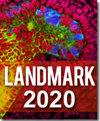Oncolytic Viruses as an Adjunct to Immune Checkpoint Inhibition.
IF 3.1
4区 生物学
Q2 Immunology and Microbiology
引用次数: 8
Abstract
Utilizing viruses in the treatment of cancer, or oncolytic viral therapy (OVT), began in the 1950s with the idea that viruses could invade and destroy cancer cells. Barriers to this approach included a lack of specificity towards cancer cells and intolerable toxicities. However, it was discovered that OVT increases cytokines such as interferon gamma and interleukins within the tumor microenvironment. This "priming" of the tumor microenvironment can lead to an improved innate immunologic response to tumor cells. An "OVT-as-monotherapy" approach has led to modest tumor response rates that have unfortunately not translated well in clinical trials. Currently, only one OVT agent-talimogene laherparevec (TVEC)-has been approved by the FDA for unresectable melanoma with limited visceral metastases. Further advancements in immunotherapy combined with improved viral engineering over the last decade have paved the way for a renewed focus on OVT. For example, various viruses have been modified to infiltrate and upregulate PD-L1 signaling within tumor cells. Upregulation of PD-L1 on tumor cells can increase tumor cell response to immunotherapies that utilize the interaction between PD-L1 on tumor cells and PD-1 on lymphocytes to allow for immune cell destruction of cancer cells. Combining OVT and immunotherapy offers more promise than OVT as monotherapy. Currently, several are actively investigating the combinatorial approach of OVT and immunotherapy in treating non-small cell lung cancer (NSCLC), colorectal cancer (CRC), breast cancer, melanoma, pancreatic cancer, multiple myeloma, and head and neck squamous cell carcinoma. In this review, we will discuss the history of OVT including its limitations as a monotherapy. We will also discuss the background of combining OVT and immunotherapy including possible benefits and pitfalls of this approach. Lastly, we will review current clinical trials investigating OVT and immunotherapy in multiple cancers.溶瘤病毒作为免疫检查点抑制的辅助手段。
利用病毒治疗癌症,或称溶瘤病毒疗法(OVT),始于20世纪50年代,当时人们认为病毒可以侵入并摧毁癌细胞。这种方法的障碍包括对癌细胞缺乏特异性和无法忍受的毒性。然而,人们发现OVT增加了肿瘤微环境中的干扰素γ和白细胞介素等细胞因子。这种肿瘤微环境的“启动”可以导致对肿瘤细胞的先天免疫反应的改善。“ovt作为单一疗法”的方法导致了适度的肿瘤反应率,不幸的是,在临床试验中没有很好地转化。目前,只有一种OVT药物——TVEC (talimogene laherparevec)已被FDA批准用于不可切除的有有限内脏转移的黑色素瘤。在过去的十年中,免疫疗法的进一步发展与改进的病毒工程相结合,为OVT的重新关注铺平了道路。例如,多种病毒已被修饰以浸润并上调肿瘤细胞内的PD-L1信号。肿瘤细胞上PD-L1的上调可以增加肿瘤细胞对免疫疗法的反应,免疫疗法利用肿瘤细胞上PD-L1和淋巴细胞上PD-1的相互作用,允许免疫细胞破坏癌细胞。OVT联合免疫治疗比OVT单独治疗更有希望。目前,有几个正在积极探索OVT和免疫治疗联合治疗非小细胞肺癌(NSCLC)、结直肠癌(CRC)、乳腺癌、黑色素瘤、胰腺癌、多发性骨髓瘤、头颈部鳞状细胞癌的方法。在这篇综述中,我们将讨论OVT的历史及其作为单一疗法的局限性。我们还将讨论OVT和免疫治疗相结合的背景,包括这种方法可能的好处和缺陷。最后,我们将回顾目前研究OVT和免疫治疗在多种癌症中的临床试验。
本文章由计算机程序翻译,如有差异,请以英文原文为准。
求助全文
约1分钟内获得全文
求助全文
来源期刊

Frontiers in Bioscience-Landmark
生物-生化与分子生物学
CiteScore
3.40
自引率
3.20%
发文量
301
审稿时长
3 months
期刊介绍:
FBL is an international peer-reviewed open access journal of biological and medical science. FBL publishes state of the art advances in any discipline in the area of biology and medicine, including biochemistry and molecular biology, parasitology, virology, immunology, epidemiology, microbiology, entomology, botany, agronomy, as well as basic medicine, preventive medicine, bioinformatics and other related topics.
 求助内容:
求助内容: 应助结果提醒方式:
应助结果提醒方式:


